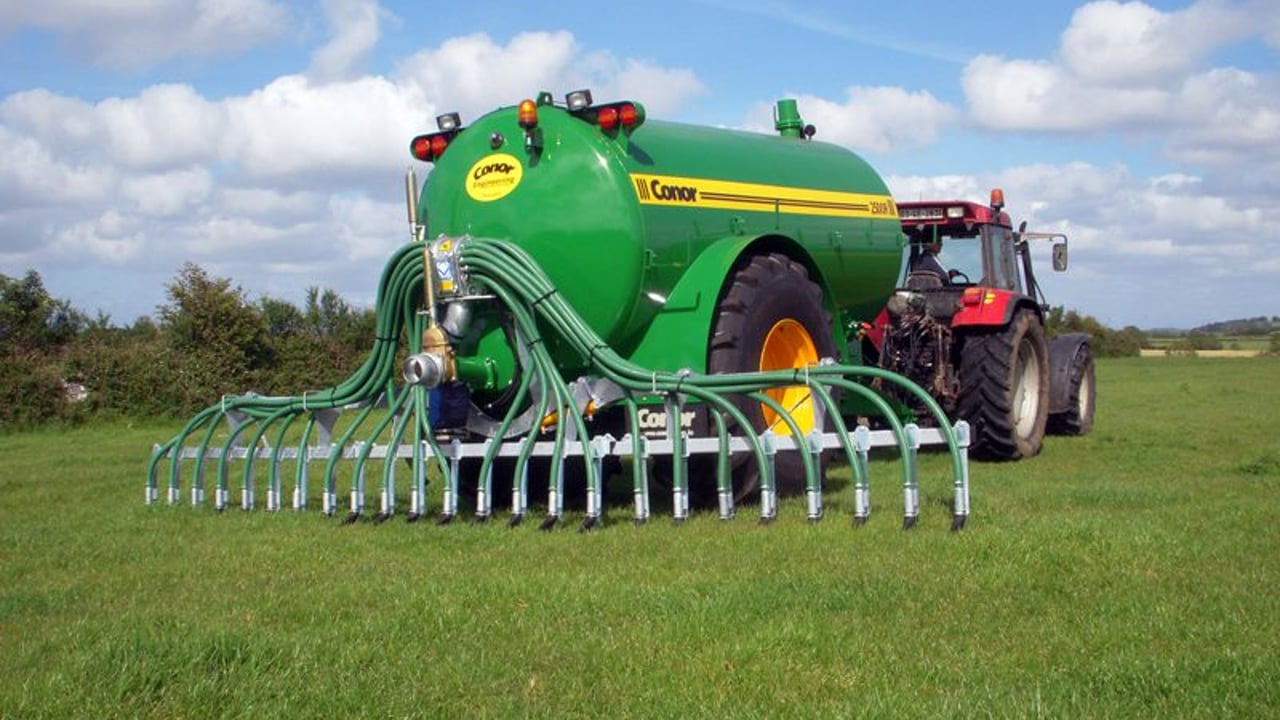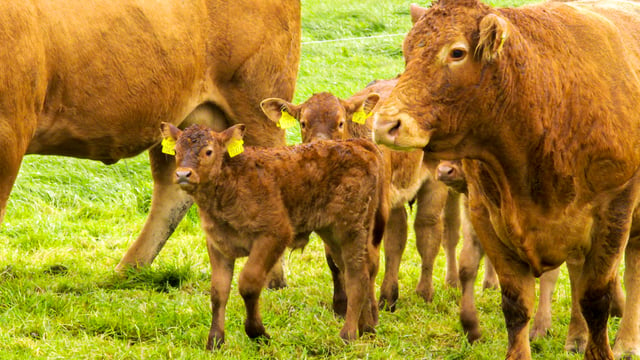How one farmer optimises his nutrients in early spring
As part of the Tirlán Teagasc farm walk on Steven Fitzgerald's farm on Tuesday (February 4), a big discussion revolved around how he optimises his nutrients on the farm.
It was estimated on the day that every 1,000 gallons of slurry on Steven's farm is worth €28, based on fertiliser prices today.
Steven got his slurry tested and it came back with nutrients having a value of 6:5:28 worth of nitrogen (N), phosphorus (P), and potassium (K) per 1,000gal.
He said that he first started spreading slurry on the farm on January 20 and said "we spread about 65ac of the farm at about 2,100gal/ac."
That means that Steven has already spread about one-third of his farm and plans to spread another one-third of the farm once paddocks have been grazed.
The Waterford farmer said that he targets paddocks that were grazed last in the year previous first, in preference to paddocks that have low covers on them of about 400-500kg DM/ha.
The farmer said that in early spring, he plans it "bit-by-bit" and gets slurry on the drier part of the farm, while "there were two paddocks low on K, that I targeted early on".
Steven also encouraged attendees to "keep tipping away on soil samples" to give guidance on which paddocks need slurry and which don't.
The farmer gets most of his slurry out on his ground by May 1, and as a result of his efficient use of slurry he only used up 80% of N allowance in 2024.
Teagasc's Seamus Kearney said that cheapest combination of fertiliser to use on farms is protected urea with 18:6:12 to cover your compounds.
Kearney listed the savings per livestock unit (LU) that Steven is earning through different measures as follows:
| Actions being carried out | Reductions in greenhouse gas emissions | Saving per LU |
|---|---|---|
| Spring LESS spreading | 1.0% | €4 |
| Reduce N by 20% | 3.8% | €30 |
| 90% NBPT protected urea | 6.0% | €23 |
| Extra week at grass | 0.5% | €18 |
| Total savings | 11.3% | €75 |
In terms of 18:6:12 and getting out compounds, Steven uses it to target his loamy soils and his silage ground.
The Teagasc advisor encouraged farmers to constantly check their fertiliser calibrations and said that "urea is 80% of the density of CAN which means it won't travel as far".
Kearney also mentioned that a bag of protected urea is 375kg compared to a bag of CAN, at 500kg, which will make a considerable difference if it is not adjusted for.
"Calibration changes from one fertiliser to another" the Teagasc advisor said and added that the way it fractures at the veins of the spinner is also different.
Farmers were advised on the day to keep their nutrient application as simple as possible and, if you are not limited, to go with more P and K as its usage has decreased by 50% since 2018.
Kearney said that "if ground could buy itself fertiliser, it would buy 18:6:12 and if you are tight on limits, go fully with protected urea".
In general, the aim for farmers this spring should be to replace some chemical N fertiliser with slurry, and get out 23 units of N/ac to paddocks that don't get slurry.
Kearney said that even with heavy covers of grass, getting out about 15 to 20 units of N/ac is needed, because when the cows eventually graze the paddock, "the ground will be starved".
Soil temperatures should begin to build up over the coming weeks so farmers should get out their chemical N fertiliser at a rate of 23 units/ac for the rest of February on most of the farm where slurry is not spread.
Ideally, at the end of February, over 50% of the farm should be spread with slurry at a rate of over 2,000gals/ac. The rest of the farm should be chemically spread once conditions allow.
N fertiliser application strategy guideline for the main grazing season is as follows:
| Month (rotation) | April (2nd) | May (3rd) | May (4th) | June (5th) | July (6th | July (7th) | August (8th) | Mid September |
|---|---|---|---|---|---|---|---|---|
| Kg N/ha | 28 | 22 | 18 | 17 | 17 | 17 | 17 | 29 |
| Unit N/ac | 22 | 18 | 14 | 14 | 14 | 14 | 14 | 23 |
The guideline above might not suit every farm situation and may not fit accordingly with farm spreading limits, so a plan should be made with your advisor for your own situation.
Steven said that the best thing he did at the start of the grazing season was to go for a quick walk around the milking platform to see where things stood in terms of grass, grazing, and nutrients application.
Tirlán's Mathew Moylan reminded farmers of the importance of keeping a safe distance from drains and rivers and said it should be a 3m distance for chemical fertiliser all through the year, 5m for slurry throughout the year, and 10m for slurry at least two weeks after the opening period.





